Showing 1-9 of 9 results

Business Tools for Ag Video Series
This seven-part video series was produced by Utah's Master Stockman Consulting to teach new and beginning producers about valuable tools for making economically sustainable decisions. This includes discussion of basic economic principles and tools, as well as how to conduct on-farm research and apply existing research to your operation. Basic Farm and Ranch Economics This […]

How to Get Your Message Out
This Online Communication Roadmap for Rangeland Professionals by the University of Arizona will help improve your skills and knowledge of online communication by outlining key strategies for communicating your rangeland or natural resources work to the right audiences. The authors suggestion you consider this the communication roadmap for when you want people to read a […]
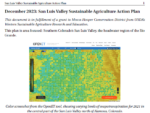
San Luis Valley Sustainable Ag Action Plan
This plan is area focused: Southern Colorado’s San Luis Valley, the headwater region of the RioGrande. Irrigation in this high, arid valley is from a combination of surface water from the Rio Grandeand its tributaries, and pumping from confined and unconfined aquifers. Because these waterresources are overdrafted and connected, managing for sustainability of agriculture involves […]
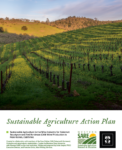
CAB Collective Sustainable Agriculture Action Plan
The Sustainable Agriculture Action Plan for Cabernet Sauvignon and red Bordeaux (CAB) Wine Production in Paso Robles is a document developed by the Paso Robles CAB Collective winegrape growers, winemakers, marketers, proprietors, and other wine industry stakeholders for under a pilot grant program by Western SARE.
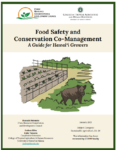
Food Safety and Conservation Co-Management: A Guide for Hawai‘i Growers
A guide for Hawaii farmers interested in improving their efforts towards food safety and improving natural resource conservation, through co-management practices. This document acts as a resource to both learn more about suitable techniques while reviewing pros and cons as shared by local producers, as well as provide template language and guidance towards implementing such […]
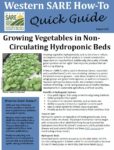
Growing Vegetables in Non-Circulating Hydroponic Beds
Growing vegetables hydroponically, such as bok choy or lettuce, can improve access to fresh produce in remote communities dependent on imported food. Additionally, the quality of locally grown produce can be higher than imported produce that can wilt during shipping. Download PDF
Photosynthesis & Hydroponics Lesson & Demonstration
Mt. Lata Farm in America Samoa created a Teachers' Resource Tool Kit with lesson plans on growing vegetables using hydroponics. This is one sample. For more information, contact the Project Leader .
Sustainable Agriculture Farming Systems Project
Public concerns regarding pesticide misuse, food safety, water use and contamination, and depletion of non-renewable resources have motivated the reevaluation of some of the practices of conventional agriculture and the exploration of alternative, more sustainable approaches to growing food. In 1988, the Sustainable Agriculture Farming Systems (SAFS) project was established at the University of California’s […]
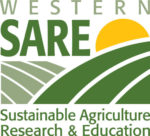
Increasing Professional Knowledge of High Tunnels in Alaska
Sustainable Agriculture Fact Sheet July 2020 State: Alaska Commodity: Many Need: Increased knowledge of agriculture professionals about the construction and production in high tunnels in Alaska, so they can better assist growers. Background: High tunnels are regionally important in Alaska for season extension and provide a growing environment that allows for production of crops […]